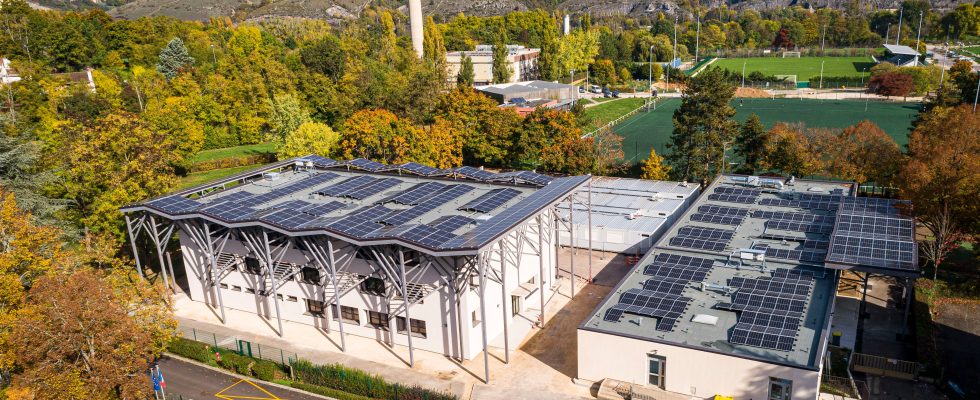In the ecological field, Dijon collects distinctions. “In three years, Europe has selected us five times for ambitious climate-related projects”, rejoices Jean-Patrick Masson, the EELV vice-president of the metropolis, responsible for the ecological transition. It is true that in this area, the Burgundian capital is multiplying initiatives, in particular to produce a large part of its energy itself.
For two years, she has been carrying out experiments in the popular district of Fontaine d’Ouche, sadly famous for its shootings. With a double challenge: a decarbonization of 75% and an energy production of… 120%. The surplus will be resold or will be used locally.
To achieve these objectives, the agglomeration is investing massively in photovoltaics. Fourteen buildings (swimming pool, stadium, municipal offices) and some HLM will be equipped with panels, like the Buffon school which has been producing its electricity since October. Other installations are being deployed in the form of shade structures over parking spaces, public lawns or driveways.
Wood boilers and waste recovery
The second lever for reducing the carbon footprint consists of reducing the share of gas from 30% to 15% in the heating network for domestic water thanks to the ramping up of wood boilers and the waste recovery unit. waste. This underground system, launched in 2008 when the tramway was built, runs for 120 kilometers and connects 55,000 housing equivalents. Which makes it the fourth largest in France.
Distribution is also paramount. “Starting up installations at the time of peak consumption is expensive and often pollutes. We will therefore store hot water and try to predict the periods of use to dispense it at the right time, underlines Jean-Patrick Masson “The same goes for electricity. We are testing vehicle batteries that we store in two shipping containers, one with the new generation models, the second with automotive reform accumulators.”
All these actions are implemented within the framework of the Response program, which aims to develop solutions to bring about, in 2050, neighborhoods with positive energy (which restore more energy than they use). In tandem with the Finnish Turku, Dijon has become the referent for six European municipalities responsible for verifying that these innovations are replicable.
These experiments are part of the continuity of the developments carried out over the past twenty years, starting with the adaptation of the waste incinerator for the supply of electricity in 2007. Its turboalternator will supply the hydrogen plant which will also be able to use, in addition, to the photovoltaic field of 17 hectares recently installed. The first plant with 43,000 panels, installed in 2018 on a former rubbish landfill site, provides for the annual needs of 8,000 inhabitants.
And it’s not over. The latest equipment in Dijon was inaugurated on April 6, in this case a sludge biomethanizer from the wastewater treatment plant, which delivers clean gas to some 4,000 homes. “Reducing the cost of purchasing energy and being a pioneer is good. But we take financial risks with technologies that are not yet well mastered, such as hydrogen, whose economic viability we do not know. “, disapproves Laurent Bourguignat (LR). Suffice to say that the next regional energy master plan is eagerly awaited.
This article is taken from the special issue “Energy transition: let’s invest together!” available on newsstands June 29.
